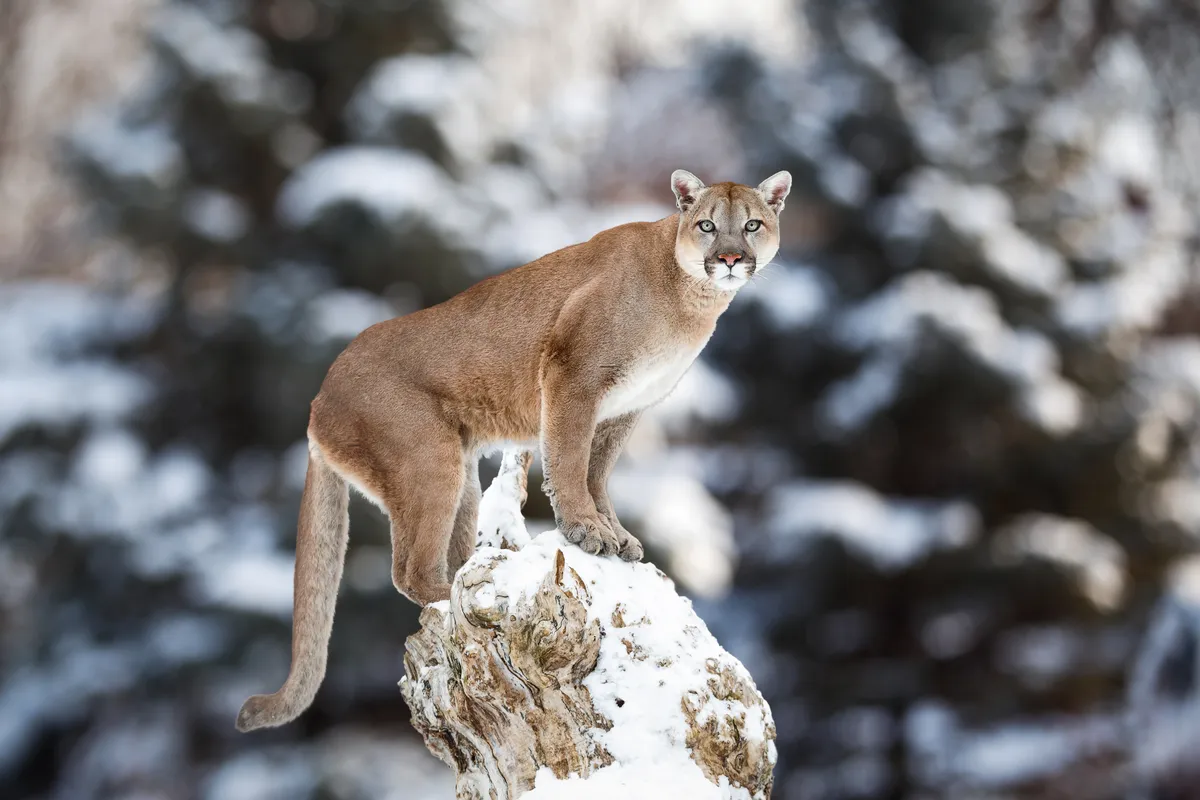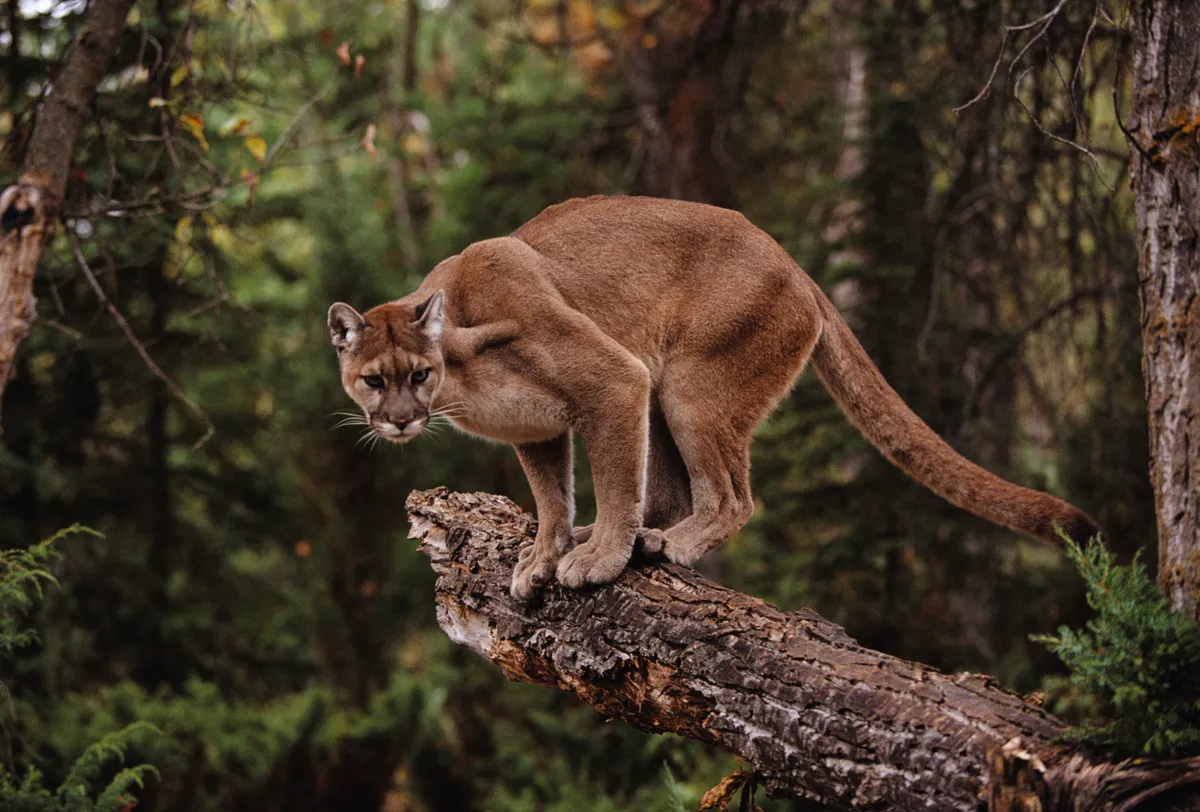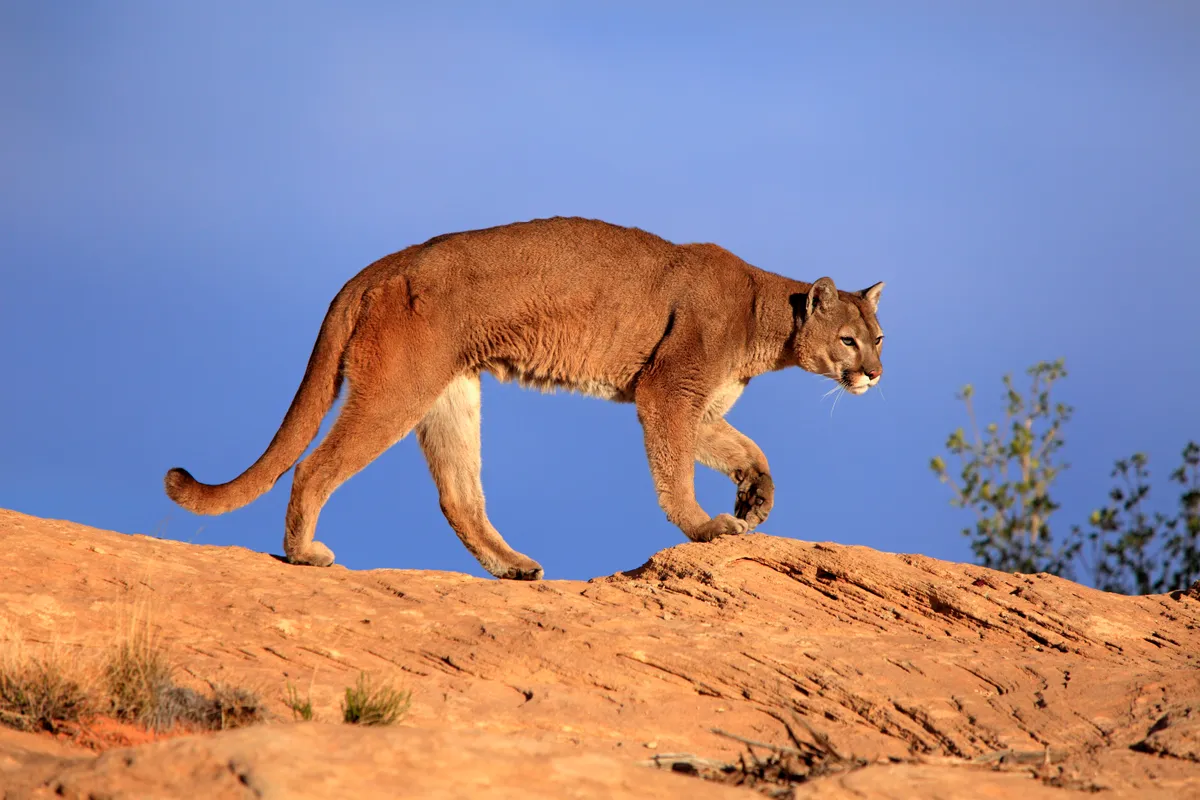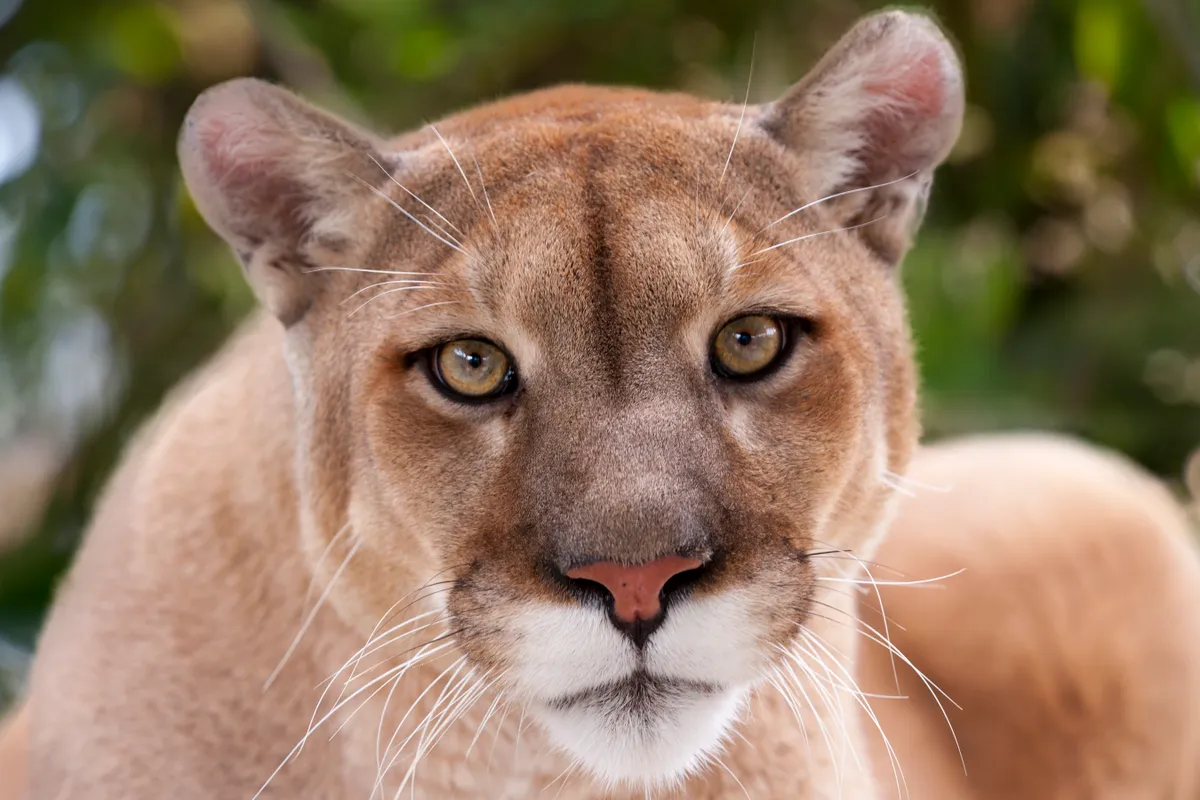What is a puma?
The puma (Puma concolor) is a large cat belonging to the felidae family. It is similar in size to the jaguar, and is found is a wide variety of habitats throughout the Americas. It is also known as the cougar, mountain lion and a number of other names.
Are pumas, cougars and mountain lions all the same species?
The six (or, by some counts, seven) subspecies are known by a plethora of names throughout their range, which spans 22 countries from southern Alaska to the tip of Tierra del Fuego. ‘Puma’ is generally used to refer to Latin American cats, while ‘cougar’ is a North American term, but the distinction is unclear. So you might find yourself talking about mountain lions, cougars, pumas, Florida panthers, catamounts or even léons – but remember: they’re all the same cool cat.
To further complicate matters, the scientific name Puma concolor is also a little confusing as it isn’t quite accurate. Concolor means ‘of one colour’, but that’s not strictly true: young pumas are spotted, and adults are a mix of shades, with the overall hue ranging from grey to rust.
Where do pumas live?
Found from Yukon, in northern Canada, right down to the southern Andes, the puma (Puma concolor) has the largest range of any native land mammal in the western hemisphere. An incredibly adaptable animal, it is found in almost every type of habitat. That includes forests, high mountains, deserts – and even urban jungles.
What do pumas eat?
Pumas are ambush predators, who creep up on their prey from distance. They generally feed on smaller mammals, but will also take wild deer. In Patagonia, they prey on guanaco, which provide fuel for these cats all year.

How long do pumas live for?
Pumas have a maximum known lifespan of 18 years.
How big is the puma or cougar population in the States?
The puma – or cougar as it is more commonly known in the US – has clung on in the USA despite extermination attempts that eliminated it from about two-thirds of its range in the country during the 20th century, including most of the east. But in the 1970s, management strategies became friendlier, and populations began to expand.
Optimistic estimates suggest there may now be as many as 30,000 individuals in the USA.

Are cougars always solitary?
Scientists working on Panthera’s Teton Cougar Project, which is headed by wildlife ecologist Mark Elbroch and based in Wyoming, have upended long-standing beliefs about puma behaviour, discovering that they are more sociable than once thought.

Do pumas have any predators?
Elbroch and his colleagues have found that wolves pose a very real threat to mountain lions, both directly and indirectly. Wolves rarely eat kittens they kill, which suggests that they kill to eliminate competition. And though the wolves haven’t killed adult pumas in Elbroch’s study, they seem to chase them at every opportunity.
What other threats do pumas face?
The most significant cause of puma mortality in Panthera’s Teton Cougar Project study area is hunting, which accounts for nearly half of adult deaths.

Pumas in Torres del Paine National Park, Patagonia
The pumas of Patagonia are bolder than their northern counterparts, probably because they’ve been the top predators in this South American region for some 10,000 years. They take what they want – including thousands of sheep each year. As a result hundreds or even thousands fall victim to retaliatory killings by farmers, says Panthera’s Mark Elbroch, though the exact number of deaths is unknown. Hunting pumas is illegal on the Chilean side of the Andes, but there’s still a bounty on them in Argentina.
Panthera is launching a project in the region in the hope of mitigating the conflict. One factor in the pumas’ favour is that ecotourists will pay big money to see them, especially in the area around Chile’s spectacular Torres del Paine National Park, where sightings have become quite reliable.
But though the cats can provide an extra source of revenue for local communities, this only works if both the animals and tourists stay safe.

